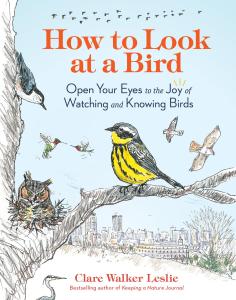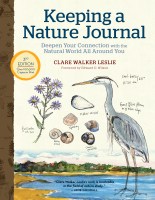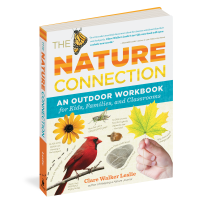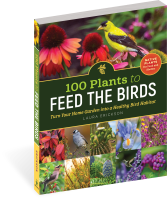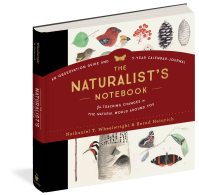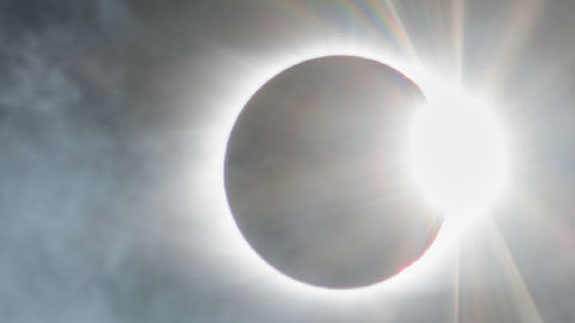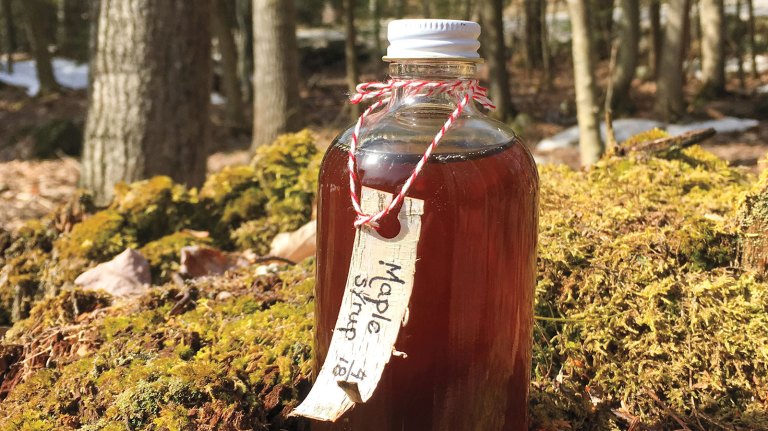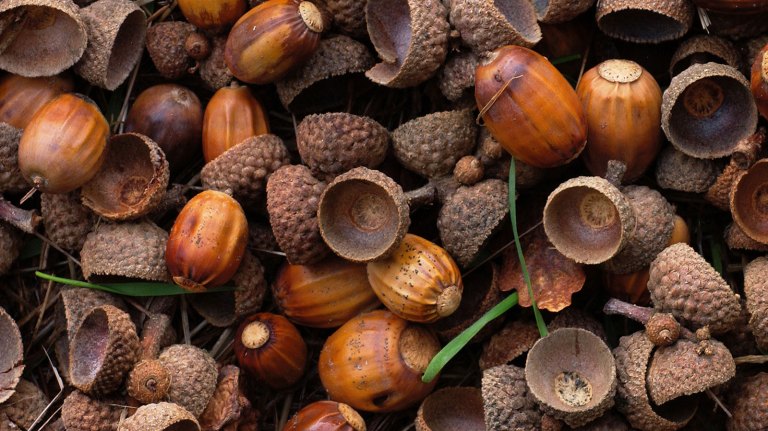Observing at Feeders: Birdwatching for Beginners
Bird feeders are an easily accessible place to start observing, identifying, and appreciating the birds around us. Learn the basics with advice from acclaimed nature illustrator Clare Walker Leslie.
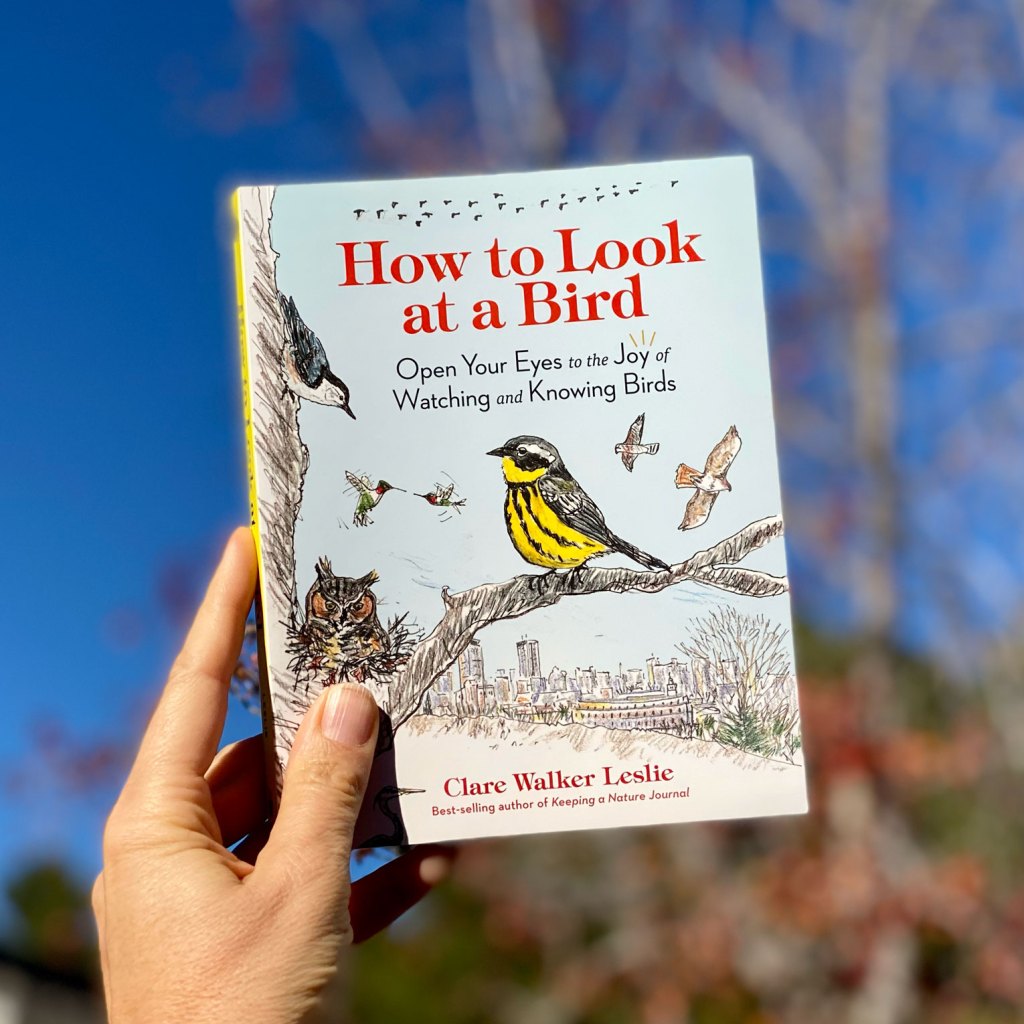
Feeding birds is a wonderful way to bring them close and observe them often. You can see all kinds of behavior as birds come and go.
There are feeders and bird seed to fit all budgets. Most hardware and home building stores carry them. If your neighbors feed birds, ask them what works in your area. It may take a few days for birds to notice and begin to come to a new feeder. Do you see different species in different seasons? Keeping a list with dates lets you compare from year to year.
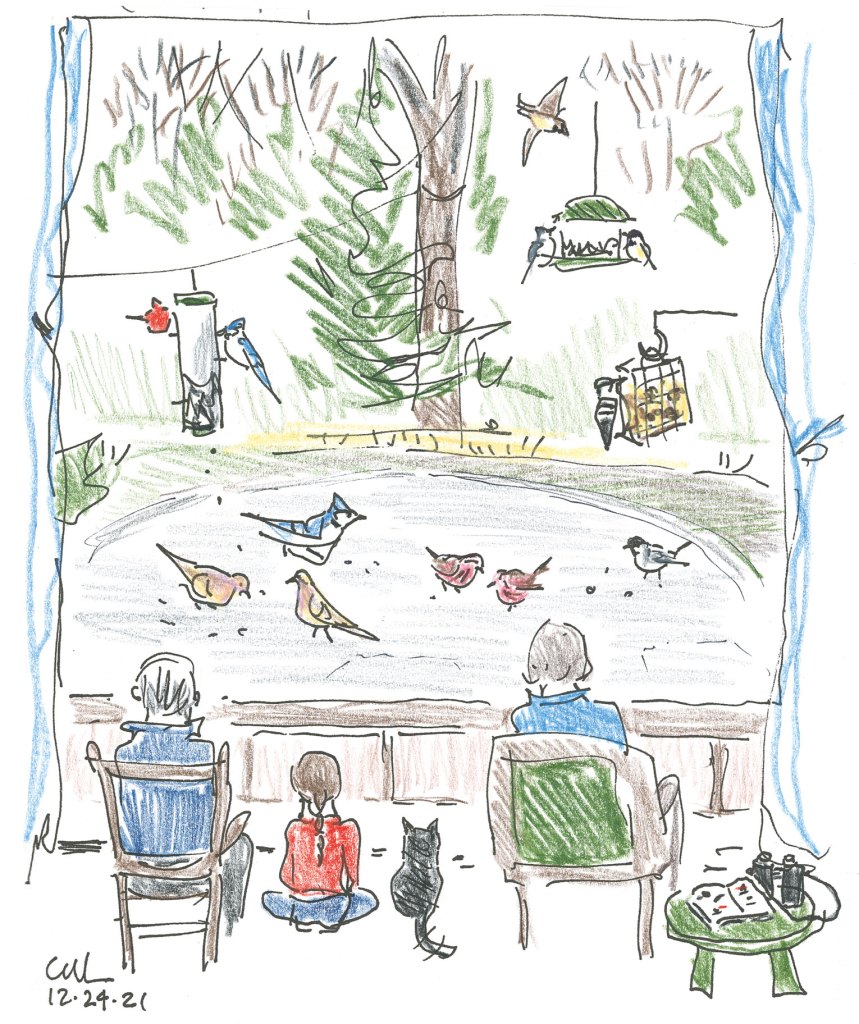
Bird feeders are more for our enjoyment than for the birds. Birds do not depend on feeders to survive. They find most of their food from the surrounding habitat. If you have space, consider planting native plants that provide food and shelter throughout the year.
Some birds don’t come to feeders. Not all birds are attracted to feeders. Robins and warblers feed on worms, insects, and fruits, not birdseed. Owls and hawks may lurk in the vicinity, hoping to catch small birds and rodents that come to the feeders for a snack.
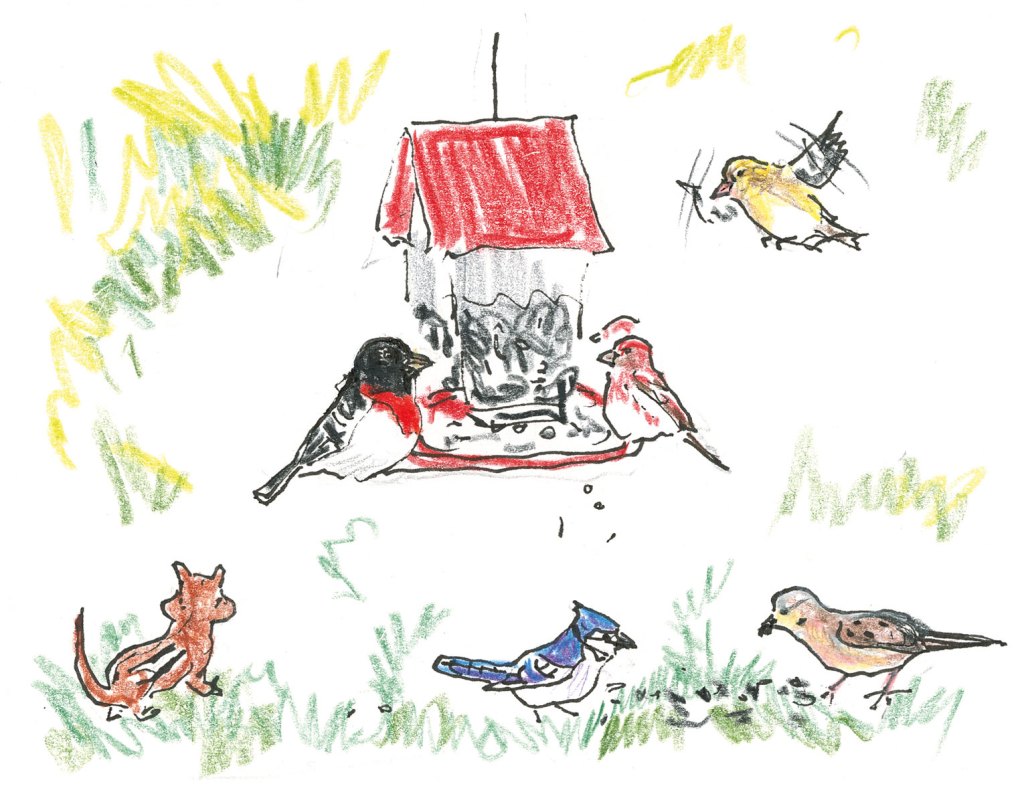
It’s fun to watch different species sharing the feeder or quarreling over access. Blue jays are messy eaters who scatter seed looking for their favorite bits. Mourning doves are mainly ground feeders, benefiting from the mess the jays make!
In the City
At our city apartment, we hang a tubular feeder from a hook on the balcony. Chickadees, house sparrows, tufted titmice, cardinals, and others visit frequently, along with the neighborhood squirrels. We scatter seed on a tray for mourning doves, pigeons, and other ground feeders. It helps that we have trees and shrubs nearby for cover and shelter.
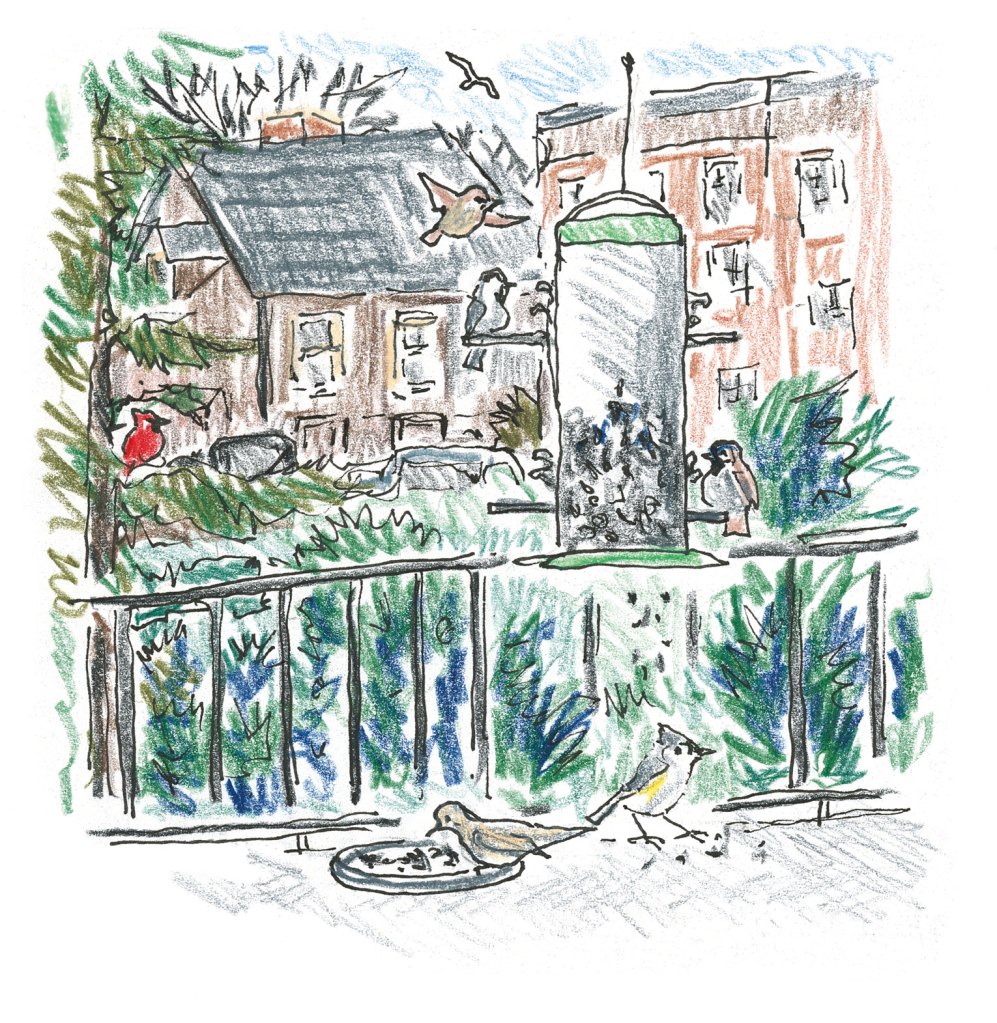
In the Country
For years, we have hung a large wooden salad bowl on the front porch of our Vermont farmhouse. We fill it with black oil sunflower seed. Mourning doves come and sit in it. Other birds come and go. In summer, blue jays and red-winged blackbirds can empty it in two days, with help from the chipmunks and red squirrels!
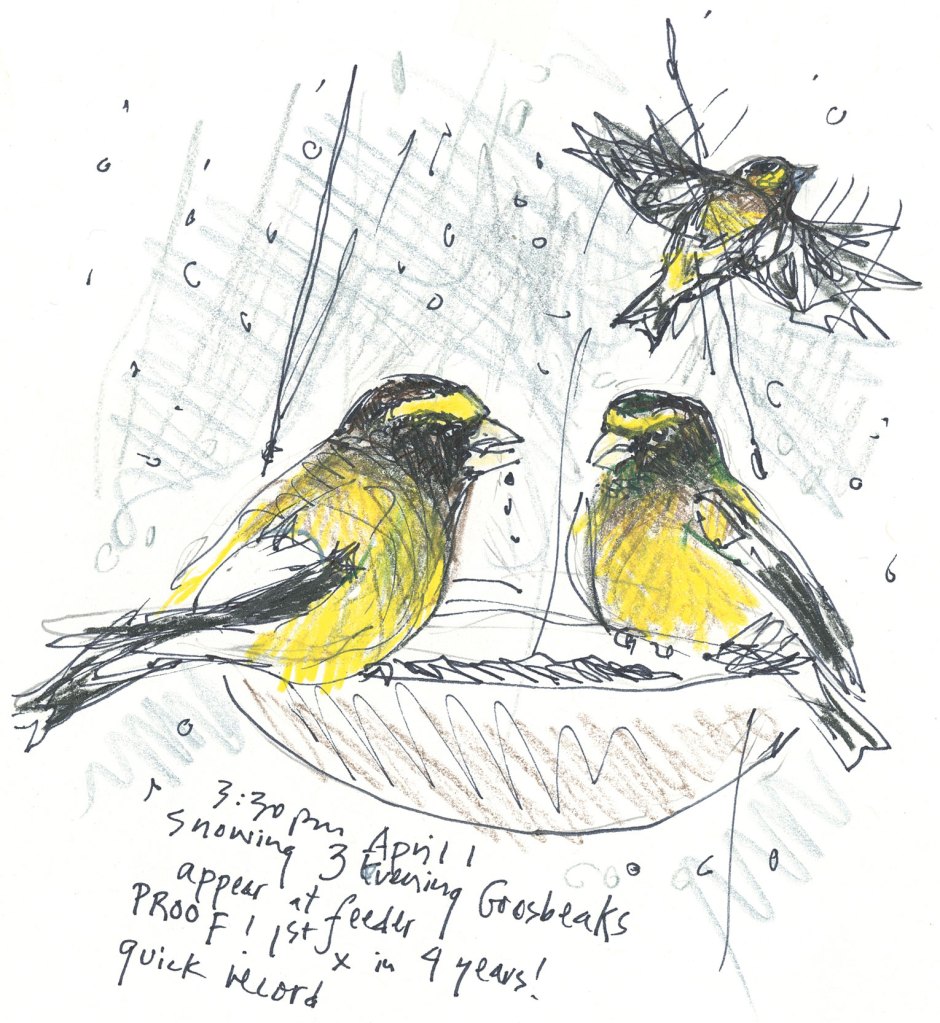
In the back, near the gardens and trees, we hang various inexpensive plastic feeders from the local hardware store. There we see goldfinches, purple finches, indigo buntings, and many others. On the ground, more mourning doves, song sparrows, lots of juncos, and of course, happy chipmunks and red squirrels.
Hummingbird feeders are fun, too. The nectar mixture is easy to make: Just mix 1 part white sugar with 4 parts boiled water. Let cool before putting it out. Don’t add food coloring—it’s not necessary and isn’t good for the hummers. Replace the nectar often, cleaning out the feeder each time.
A Few Feeder Pointers:
- Don’t hang feeders too close to windows. The reflection of the sky can confuse birds, who might fly up and hit the glass.
- Be careful about attracting birds to areas where there are cats roaming around. Cats kill millions of songbirds every year.
- Keeping squirrels and chipmunks from hogging all the seed is an eternal battle. Baffles and specially designed feeders may work.
- If there are bears in your area, it’s best to take your feeders in at night between April and November.
Excerpted and adapted from How to Look at a Bird © by Clare Walker Leslie.
Bestselling author and acclaimed nature illustrator Clare Walker Leslie invites beginning birdwatchers to hone their observational skills with this easy-to-use visual guide.
Using her signature nature journal illustrations, Leslie shows readers the key clues to look for, from the shape of the beak or talons to distinctive feather colorings, flight patterns, and behavioral traits. She offers simple prompts that encourage readers to embrace curiosity and take a closer look: Where are you? What season is it? How is that bird moving or eating? With an emphasis on the birds that are most likely to be seen at a feeder, in a city park, or at a nature preserve, How to Look at a Bird makes bird watching, identification, and appreciation accessible to everyone, no matter where they live.
